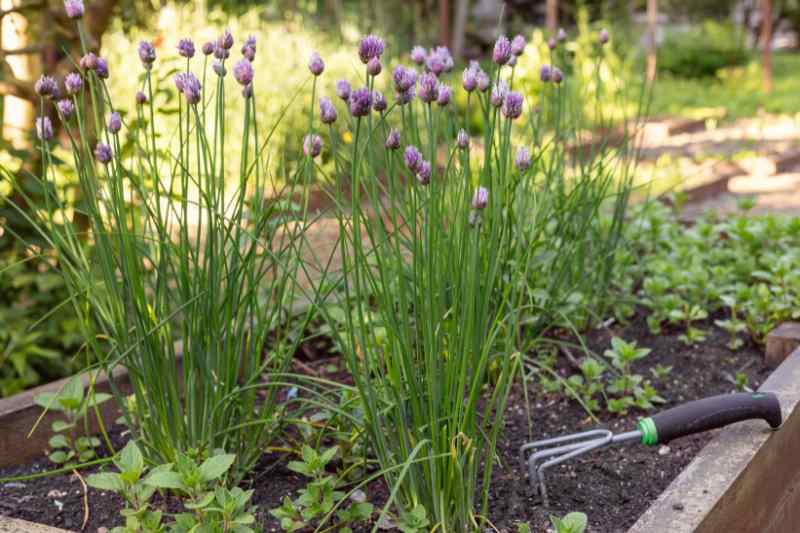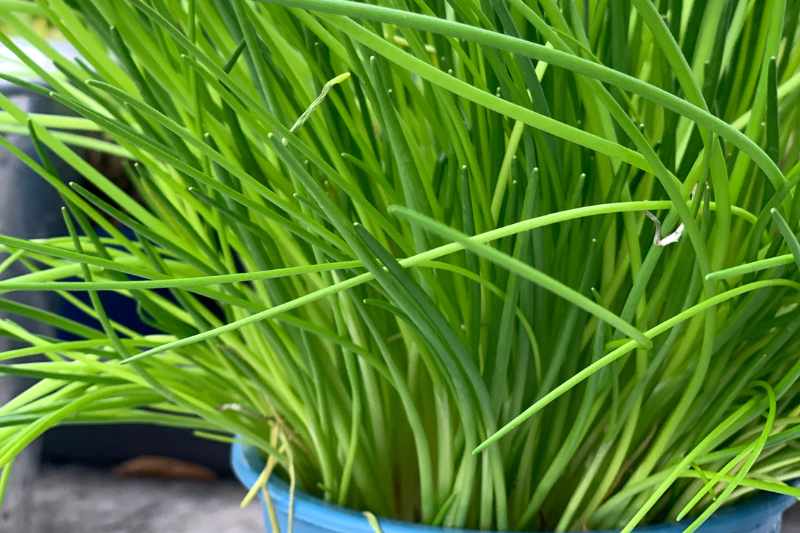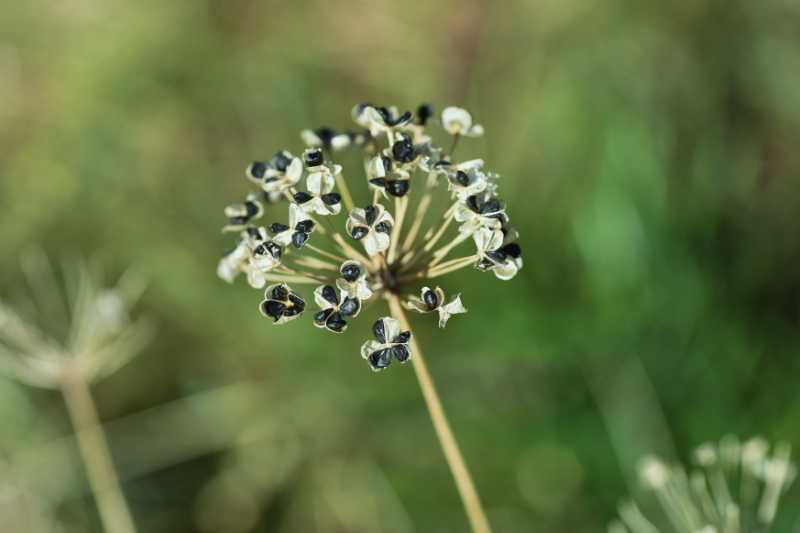Chives are an aromatic plant cultivated for their long, thin, hollow, and fragrant leaves, with a slightly garlicky taste. Very easy to grow, they naturally regenerate after each cut of the foliage. Ideal for flavouring salads, omelettes, or sauces, chives on the balcony, on a windowsill, or in the vegetable garden, are easy to cultivate and can be harvested throughout the season. They are very simple to sow and require little maintenance to produce beautiful fragrant stems. Discover, through this tutorial, how to successfully sow chives step by step, in pots or directly in the ground!
To learn everything, check out our complete file "Chives: planting, sowing, dividing".

When to sow chives?
The sowing period for chives extends from March to August, depending on conditions. They prefer mild temperatures between 15 and 20°C. You can do your:
- indoor sowing of chives: from March, in a bright place, at room temperature. Sowing done early in the season allows for an initial harvest from May to September.
- outdoor sowing of chives: directly in the ground or in pots, once the risk of frost has passed, usually after the Ice Saints, that is to say after mid-May, depending on the regions and the climate.
How to sow chives?
Necessary materials:
- a mini-greenhouse (optional)
- biodegradable pots and buckets
- a good sowing and repotting compost
- a sprayer or a watering can with a fine rose
- a hoe to trace the sowing furrows
- a trowel if needed to transplant the small seedlings
- a rake
How to sow chives in pots or containers?
Chives grow very well in pots, containers, or even in a box on a balcony or windowsill. If you do not wish to sow directly in pots or containers, it is quite possible to sow chives in buckets. Chives tolerate transplantation well. It is a fairly robust plant that forms a clump, and its roots tolerate being moved, especially when the young plants are still small. To limit the stress of repotting, I recommend using biodegradable pots. They allow for planting chives directly without disturbing the roots, while retaining moisture, which facilitates the recovery of young plants.
Sowing chive seeds:
- Fill the pot, container, or biodegradable buckets with compost up to 2 cm from the edge
- Sow the seeds, spacing them a few centimetres apart (it is possible to sow in clusters of 3 to 5 seeds)
- Lightly cover with compost (2 to 3 mm maximum)
- Gently press down with your hand
- Water with a fine spray to moisten the substrate without soaking it
- Place the pot in the light, without direct sunlight if temperatures are high
- Keep the compost slightly moist until germination, which occurs in 10 to 20 days
- If you have sown in buckets, once the plants are 10 cm tall, transplant them using a trowel to their final location
You can place your pots under a mini-greenhouse or cover them with a transparent plastic film. This helps to retain heat and moisture, thus promoting rapid and regular germination, especially early in the season. Position the pots in the light, at a mild temperature (15 to 20°C). Avoid full sun in summer. Keep the compost slightly moist.
Tip: Chives in pots can stay in place all season. Cut the leaves regularly to encourage regrowth.
Advice: In pots, the roots may suffer, as they are less protected than in the soil. In winter, bring the pots indoors or protect them (mulching, winter cover) in case of harsh winters, especially in cold regions.

How to sow chives in the ground?
Choose a sunny or partially shaded location, sheltered from cold winds. Chives prefer light, cool, well-drained soils that are slightly enriched with compost.
Preparation of the soil for chives:
- Loosen the soil surface using a hoe or a rake
- Weed carefully and remove stones
- Rake to level the soil
Sowing:
- Trace shallow furrows (0.5 to 1 cm) spaced 20 cm apart
- Sow the seeds by scattering them, in a line or in clusters (that is to say in small groups of 3 to 5 seeds every 10 to 15 cm)
- Lightly cover with fine soil
- Press down with the back of the rake
- Water with a fine spray
- Thin the seedlings as soon as the young plants reach 5 cm, keeping only the most vigorous plants, spaced 10 to 15 cm apart.
Cold-resistant, chives can remain in the ground all year round, especially in regions with a temperate climate.
Maintenance after sowing
Chives are easy to maintain, once well developed, they require little care: moderate (but regular) watering, weeding, and regular harvesting are sufficient. In winter, the plant disappears above ground, but will naturally regrow in spring.
How to collect chive seeds?
Chives bloom between March and May, forming small, decorative purple pom-poms. These flowers then produce shiny black seeds that you can easily collect. You can thus use your own chive seeds for sowing in the following season.
- Leave a few flowers to dry completely on the clump, without cutting them
- When the flowers are well faded and dry, cut the flower stems
- Shake them upside down over a clean cloth or a sheet of paper to release the seeds
- Let the seeds dry in the air for a few days if necessary
- Store them in a paper bag or an airtight box, away from moisture and light.

































Comments